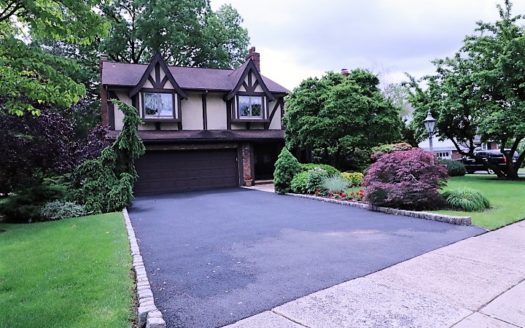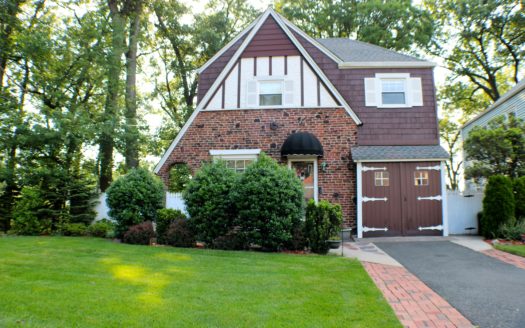By Stephanie Vozza
- Identify repairs and make a plan
- Declutter and clean—make it feel spacious
- Depersonalize your home
- Paint where it needs it most
- Set the stage—make it feel like home
- Keep it clean and consistent
- Takeaways
- Home showings checklist
Investing some time and effort up front to prepare your house for showings will generally increase the likelihood of receiving offers soon after you list your home. The longer your home stays on the market, the harder it can be to sell.
Things like repairs, staging, and cleaning can help attract better offers, but they can also be a time-consuming and expensive process.
Things like repairs, staging, and cleaning can help attract better offers, but they can also be a time-consuming and expensive process.

This step-by-step guide will walk you through how to prepare your home for sale so you can get the most value from the effort you put in.
1. Identify repairs and make a plan
Normal wear and tear can add up, especially if you’ve lived in your home for a long period of time. From a door that squeaks to a window that sticks or a toilet that runs until you jiggle the handle, it’s easy to ignore minor issues that seem like quirks.
Buyers, however, may see these quirks as problems that lower the value of your home or as bargaining chips during the closing process. If you have too many noticeable repairs, buyers may also wonder if more serious issues lurk below the surface, and that could prevent them from making a good offer.
Go through your home room by room, noting repairs that need to be made. Check out our blog to learn more about the most important things to repair before selling a house. Look for holes or dents in walls. Floors should be free from cracks or chips.
In the kitchen, appliances should be in working order. Examine cabinets and drawers to ensure that they open and close properly. Kitchen and bathroom faucets, fixtures and drains must be leak-free and operational. Bathroom tubs and showers should have no broken tiles. Also, look for signs of water damage.
Your home’s heating, ventilation, and air conditioning system should work and be leak-free. So should your water heater, smoke detectors, electrical panel and circuit breakers.
Outside, examine exterior surfaces, weather-stripping, eaves and windows. Look for damage such as peeling, cracks or rot. Decks and patios should be in good condition. Fencing should be free from damage, like rot or rust. Landscaping should be trimmed back from your home, eliminating the potential for causing damage.
Some repairs might be easy do-it-yourself projects, such as patching a hole in drywall or unclogging a slow drain. If it’s your first time making repairs like these, video tutorials on YouTube are a great place to get started.
More serious or complicated repairs may require hiring a professional. If your roof leaks, outlets don’t work, or you have cracks in your foundation, having the job done by someone who has the right tools and know-how can save time and ensure the repairs are done correctly.
Repairs and upgrades can increase the value of your home so you’ll need to consider the time and cost it will take versus the impact on your home value — read our list of improvement projects that can generate higher returns (based on proprietary Opendoor market data).
A pre-sale inspection can ensure all repairs necessary for the sale are handled before buyers walk through. If the inspection unearths costly issues, such as needing a new roof, you can decide to make the fix or price your home a little lower to account for the needed repair. An inspection typically costs between $200 and $483, according to HomeAdvisor.com. Most buyers will include an inspection contingency in their offer so if both parties aren’t able to agree on repairs following an inspection, the buyer can walk away without a penalty.
Dreading the hours of prep work and home showings? Consider selling your home to an iBuyer like Opendoor. At Opendoor, we take a single service charge to provide you with a hassle-free sales process without listing, showings, and months of stress. You’re in complete control of your moving timeline, and choose your own closing date. Read our guide and learn more on how Opendoor’s home condition assessment and repair process works.
2. Declutter and clean – make it feel spacious
Big kitchens, bathrooms and storage tend to be big selling points so it can help to make your rooms look as spacious as possible. Professional home stagers recommend that you remove 50% of your items.
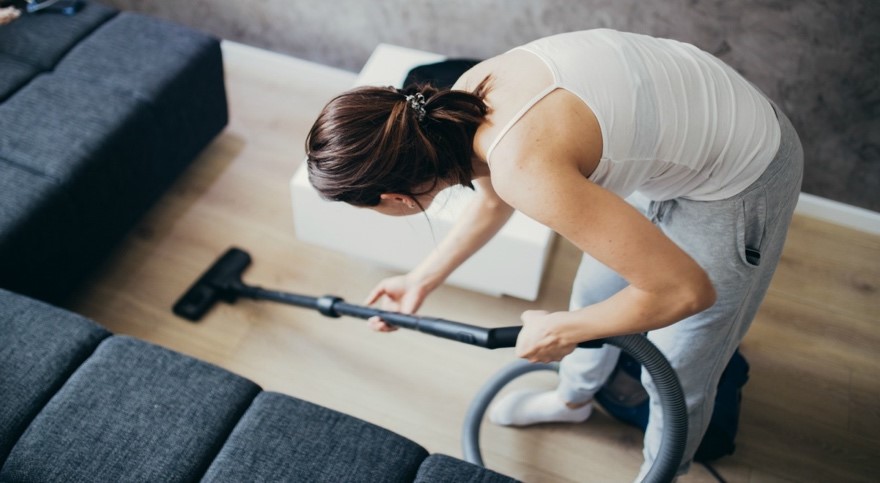
Go through your home, decluttering and organizing spaces. Don’t just shove belongings in closets, cabinets, attics and basements, as buyers look inside all of those places. Use storage bins that can be tucked under beds or neatly stacked in a basement or closet. Baskets or cubbies inside cabinets can make things look neat and clean.
Decluttering also includes furniture. The scale of your pieces should match the size of the room, and buyers should be able to easily walk around spaces without bumping into furniture. Make sure furnishings don’t block doors, windows or architectural features. In a small living room, for example, consider removing end tables or accent chairs. Such moves aren’t convenient, but remember, they’re temporary.
You may need to rent a storage unit during the home-selling process. Keeping your belongings offsite is the best way to maximize the space in your home. Storage units can range in price from $30 to $300 per month, depending on size, location and features like climate control and security, according to MovingTips.
Consider hiring a professional organizer to help you declutter. He or she can help you identify items to discard, store or donate. Organizers typically charge hourly fees ranging from $30 to $80, according to Angie’s List. This process also makes moving easier since you’ll have fewer items, and others already boxed.
After decluttering comes deep cleaning. Hiring a professional may prove the most effective way to do the job quickly and thoroughly. The average cleaning service charges $167, according to HomeAdvisor.com. You’ll also want to clean carpeting, bringing the fibers and colors bring back to life. Rent a machine from a home improvement store for about $50, or hire a professional. The average cost of a carpet cleaning service is $176, according to HomeAdvisor.com.
3. Depersonalize your home and help buyers to see its full potential
In addition to cleaning and decluttering, you should consider depersonalizing your home. The goal when selling is to have a buyer fall in love with your house, picturing themselves living there and imaging their belongings inside. That can be difficult if your home has your personal stamp all over it.
Neutralize the space by removing items such as family photos, souvenirs, religious symbols, diplomas and certificates, hobby supplies, and collections, including CDs and DVDs. You don’t want a buyer to feel like they’re intruding in your space or, worse, take offense at your lifestyle.
Also, consider updating your accessories and furnishings if your décor is outdated or avant-garde. You don’t want buyers to miss out on key features of your home because they’re distracted by your belongings.
4. Paint where it needs it most
A fresh coat of paint can make a home feel new. In fact, painting is one of the most common recommendations real estate agents make to sellers before they list. Paint can help small rooms appear larger and highlight architectural details, such as crown molding and trim. Be mindful of your color choice, however. Experts recommend warm neutral colors, such as beige, tan, gold, gray, and “greige,” a blend of gray and beige. Because these shades go with anything, they can help buyers to picture their belongings in your home.
If you don’t have time to paint your entire home, HouseLogic.com recommends painting the kitchen, bathrooms, entryway and foyer. If you’ve had your house painted in the past few years, you can likely just touch up scuff marks or stains on walls or baseboards.
Homeowners often tackle painting projects themselves. For best results, prep the rooms by cleaning the dust and dirt from walls, repairing any damage or holes, applying painter’s tape to trim, and covering furniture and floors with a drop cloth. While painting isn’t difficult, it can be time-consuming. The average bedroom will take 30 minutes to two hours to prepare, and one to two hours per coat to paint, according to the paint company Glidden. Hiring a professional painter runs from $380 to $790 per room, not including ceilings, trim or paint costs, while doing the project yourself can cost between $200 and $300 per room, according to HomeAdvisor.com.
5. Set the stage—make it feel like home
Now comes the final step: staging your home. The goal is to create a great first impression so that buyers put your home at the top of their list. On average, staged homes sell 88% faster and for 20% more than those that aren’t staged, according to Realtor.com.
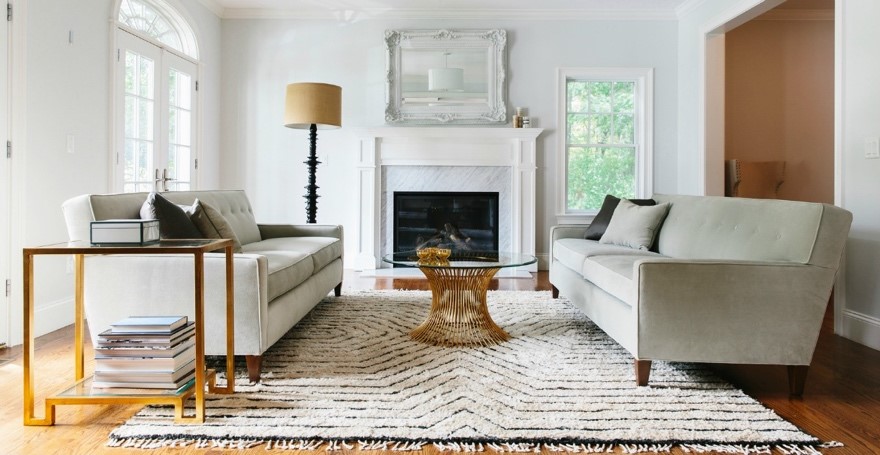
You don’t need to spend a lot of money — a few updates can make a room feel new. Tuning into HGTV shows like “Fixer Upper,” “Flip or Flop,” and “Love It Or List It” can provide you with decorating inspiration. They showcase the most popular looks and trends in home decor, which can help you make design decisions when staging your home.
You don’t need to stage your entire home. Focus instead on rooms that impress buyers most, such as the kitchen, living room, master suite, and bathrooms. In the kitchen, for example, place a bowl of fresh fruit on the countertop and set the table with beautiful dinnerware and linens.
In the living room, toss a decorative blanket on the arm of the sofa and add a vase of fresh flowers to the coffee table. Update bathrooms with fluffy new towels and display a dish of decorative soaps.
Put a tray with a book and teapot on the edge of the master bed. Create a single focal point in each room, hanging a simple piece of artwork that enhances your staging, or highlighting architectural details, such as a fireplace or beautiful windows.
While staging is mostly about the details, you might need to update your furniture, especially if your current furnishings are dated or in bad condition. If you were thinking of replacing your worn out sofa, for example, it might be a good idea to do that before you sell your home. You can also rent furniture while your house is on the market. This is a good idea if you’ve already moved into your new home, and the home you need to sell is vacant. Unfurnished rooms look smaller, and placing furniture in rooms helps buyers better understand where they would put their own belongings.
Staging also helps you give rooms purpose, giving prospective buyers ideas about how they might use an extra bedroom, basement or nook. Choose a function that might appeal to your demographic. For example, if your house is a starter home in an area that appeals to young families, set up a bedroom as a nursery or playroom. If your condo appeals to single buyers, think about designing a home office or home gym. Staging is about design and lifestyle.
Don’t forget to stage the exterior, creating curb appeal. A buyer’s first impression happens when they pull up in front of your house. The appearance of your home’s exterior can increase your home’s value up to 17%, according to a study from Texas Tech University.
Stage your exterior by keeping your yard tidy. Mow the grass, trim bushes and shrubs, and freshen your mulch. Add color by planting flowers in your front yard or in pots on your front porch. In winter, consider seasonal touches like a wreath or holiday lights.
If decorating isn’t your strength, you can hire a professional stager. An initial consultation costs between $300 and $600, according to Realtor.com. If the stager brings in new furnishings, you’ll pay a monthly rental fee. Some professional home stagers require a minimum contract, even if your house sells quickly. The national average for home staging is between $2,000 and $3,200, according to Fixr.com.
A real estate agent can recommend a professional stager, and in many cases agents will cover the cost of staging to help your home sell. Staging your home will helps set the stage for creating the best listing photos—and that can boost interest and showings.
6. Keep it clean and consistent
Once your home is ready to sell, the trick can be maintaining that level of repair and decoration. Showing requests can happen at a moment’s notice, and you won’t always have time to ready your home.
Create a cleaning schedule and stick to it. Control of clutter by putting things away when you’re done using them. Enlist the whole family, so the responsibility is shared. Make a habit of wiping kitchen and bathroom fixtures and surfaces daily. Keep wastebaskets emptied. Vacuum or sweep before you leave the house. Mow your lawn and remove weeds every week. Keep your walkway and porch clean and accessible.
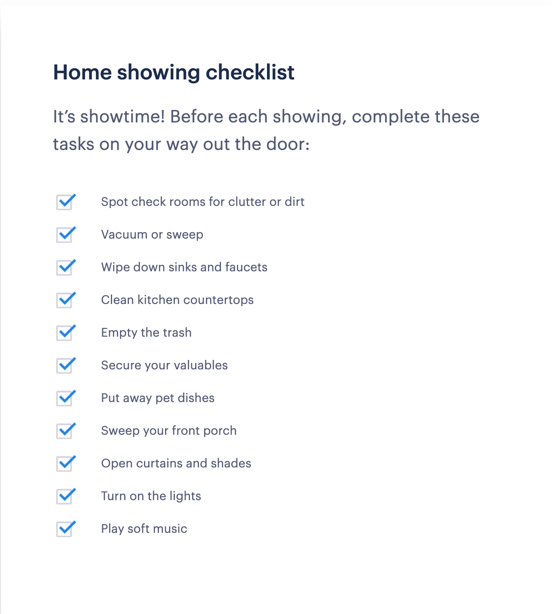
If you have children, keeping things tidy can be more challenging. Streamline their toys for the time being, or create a rule around how many toys can be out at one time. If you have pets, keep their belongings and food put away, and pick up your yard.
Nothing would be worse than a potential buyer walking around your yard and getting an unwelcome surprise. If possible, consider boarding your pets with a relative, friend or kennel for a few weeks or during showings to help eliminate pet odors.
It can take several showings before you receive your first offer, which means your house can sit on the market for weeks or even months. If you have babies or toddlers who nap or several pets, consider moving out of your house while it’s on the market if at all possible.
Ask friends or family if you can stay with them, look for a month-to-month rental, or consider an extended-stay hotel. You might plan a vacation for the first week, or weeks, after listing the home. The initial two weeks of listing can bring a flurry of showings and getting away can reduce the stress.
7. Takeaway
When you live in a home, especially for a long time, it’s easy to overlook the things that can make or break an offer. Selling your home is about taking an objective look from a buyer’s point of view. Remove yourself and your memories from the equation, and imagine that you are seeing your home for the first time.
Consider asking friends or family for their honest feedback so you can be sure you’ve done everything possible to make your home look its best before you put it on the market. You’ll impress buyers who, in turn, will impress you with good offers.
This article is meant for informational purposes only and is not intended to be construed as financial, tax, legal, real estate, insurance, or investment advice. Opendoor always encourages you to reach out to an advisor regarding your own situation.

